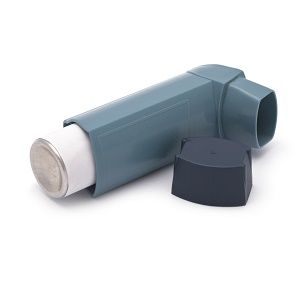News
Article
Preventative Drug Lists Led to More Affordable Asthma Medication
Author(s):
This study indicated the potential of PDLs as a strategy for those that have HDHP-HSAs to address both patient access and affordability of asthma care.

A preventative drug list (PDL) is linked with more affordable asthma medication as well as greater use of controller medication, according to recent findings, though PDLs do not lead to differences in outcomes for clinical asthma.1
This new data was the result of a recent case-control study which aimed to assess the effects of a PDL that provides exemption from out-of-pocket cost sharing for patients’ asthma medications on adverse outcomes, on their utilization, and on their out-of-pocket expenses.
The research was viewed as invaluable, given the varying results researchers have had in examining links between reducing or removing cost-sharing and medication adherence, in addition to health outcomes.2
The investigators—led by Anna D. Sinaiko, PhD, from the Department of Health Policy & Management at Harvard T.H. Chan School of Public Health—also noted that there had been an absence of data concerning the relationship between PDLs within High Deductible Health Plans coupled with Health Savings Accounts (HDHP-HSAs) and outcomes for asthma.
“In this study, we analyze whether a PDL that includes asthma controller and rescue medications is associated with improved adherence to controller medications, reduced adverse health outcomes, and reduced patient (out of pocket) spending among commercially insured patients with asthma enrolled in these plans overall and for lower-income subgroups,” Sinaiko and colleagues wrote.
Background and Findings
The investigators utilized claims data that spanned from 2004 - 2017, and the data was obtained from a prominent US health plan known to operate nationwide, catering to both commercial and Medicare Advantage beneficiaries. The team’s dataset covered data on member enrollment in addition to medical and claims at pharmacies.
The research focused on individuals in the age range of 4 - 64 known to have a minimum of 24 months of continuous enrollment in an HDHP-HSA and at least a single claim related to asthma such as an emergency department visit, outpatient visit, or hospitalization in the beginning half year of their enrollment.
For the investigators to determine whether a patient's employer had a PDL that was shown to cover asthma medications, the team utilized a methodology outlined in prior research.3 Their work involved examining information on deductibles as well as copayments within medication claims for all of those associated with an employer account.
The investigators specifically identified asthma medications which had been on the insurance carrier's PDL through the use of the National Drug Data File Plus, before then looking at deductibles and copayments linked to such medications for asthma.
The investigators also determined the times in which eligible employers were shown to have offered a PDL which incorporated such medications. Those enrolled in HDHP-HSA plans which were found not to have had asthma medications in their PDL were not used in the study.
Study participants with 2 years of continuous enrollment in an HDHP-HSA that did not include a PDL were compared to those with an employer-mandated addition of a PDL with asthma medications included. The investigators’ analysis was done from October 2020 - June 2023, and they controlled for demographics and asthma severity, stratifying the data by income in patient neighborhoods.
The research team focused on the utilization of asthma medications on the patients’ PDL (controllers and albuterol), asthma exacerbations (oral steroid bursts and asthma-related emergency department visits), and on participants’ out-of-pocket expenditures.
Overall, the investigators assessed a total of 12,174 subjects in their research, with a mean age of 36.9 years and 56.25% being female. They reported that a PDL was shown to have been linked to rises in 30-day fills for any controller medication (0.10 [95% CI, 0.03 - 0.17] per enrollee; rise by 12.9%).
They also found this for combination inhaled corticosteroid long-acting β2-agonist (ICS-LABA) medications (0.06 [95% CI, 0.01 - 0.10] per enrollee; increase of 25.4%). The research team noted that PDLs were shown to have led to a higher number of days which were covered with ICS-LABA (6.0% [0.7% - 11.3%] of days; increase of 15.6% ).
Furthermore, receiving a PDL resulted in reduced out-of-pocket expenses for asthma care (−$34 [95% CI, −$47 to −$21] per enrollee; difference of 28.4%). The team added that there was not a major impact on asthma exacerbations, and they found no differences in outcomes based upon the patients’ income.
“Adopting VBID and other policies that exempt important medications for asthma medications are a potential strategy to reduce the cost-burden of asthma care and modestly improve adherence,” they wrote.
References
- Sinaiko AD, Ross-Degnan D, Wharam JF, et al. Utilization and Spending With Preventive Drug Lists for Asthma Medications in High-Deductible Health Plans. JAMA Netw Open. 2023;6(8):e2331259. doi:10.1001/jamanetworkopen.2023.31259.
- Huckfeldt PJ, Haviland A, Mehrotra A, Wagner Z, Sood N. Patient Responses to Incentives in Consumer-directed Health Plans: Evidence from Pharmaceuticals. National Bureau of Economic Research; 2015. doi:10.3386/w20927.
- Ross-Degnan D, Wallace J, Zhang F, Soumerai SB, Garabedian L, Wharam JF. Reduced cost-sharing for preventive drugs preferentially benefits low-income patients with diabetes in high deductible health plans with health savings accounts. Med Care. 2020;58(Suppl 6 1):S4-S13. doi:10.1097/MLR.0000000000001295.





